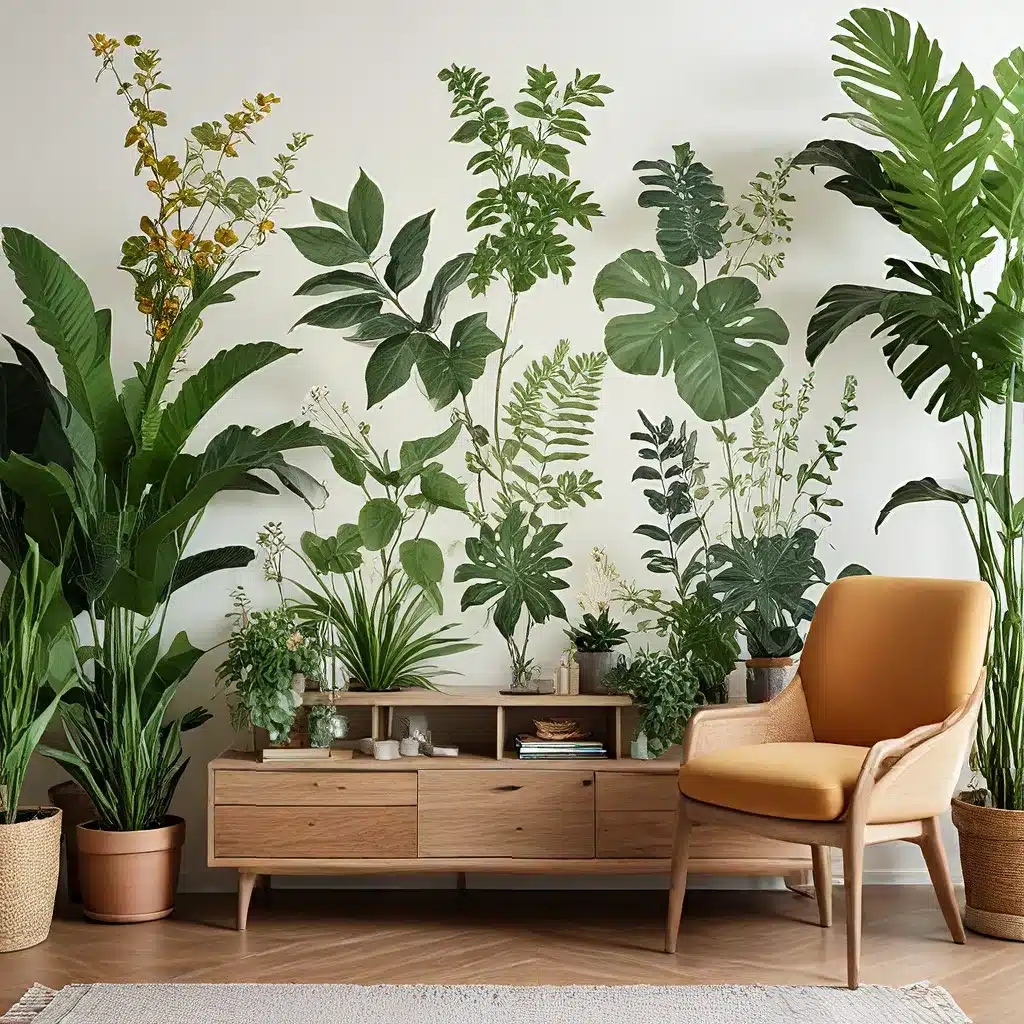
In a world increasingly dominated by concrete and technology, the craving for a deeper connection with nature has never been stronger. As homeowners and design enthusiasts seek to create sanctuaries that nurture the mind, body, and soul, the botanical bliss movement has emerged as a transformative force in the realm of interior design.
Reconnecting with Nature: The Rise of Botanical-Inspired Interiors
The desire to bring the outdoors in has been a long-standing trend in the design community, but it has gained unprecedented momentum in recent years. Fueled by a growing awareness of the mental and physical benefits of exposure to greenery, homeowners are embracing the biophilic design approach, which seeks to integrate nature seamlessly into the built environment.
Urban Grace Interiors, a leading design firm, has witnessed this shift firsthand. “Our clients are increasingly seeking ways to infuse their homes with a sense of natural harmony,” says the firm’s principal designer, Sarah Williamson. “They understand the power of houseplants and natural materials to create a serene, rejuvenating atmosphere that nourishes the soul.”
Botanical Bliss: The Benefits of Bringing Nature Indoors
Houseplants have long been celebrated for their ability to purify the air, reduce stress levels, and boost productivity and creativity. However, their impact extends far beyond the practical. “Surrounding ourselves with greenery has a profound effect on our emotional well-being,” explains Williamson. “It’s a tangible connection to the natural world that can transport us to a calmer, more grounded state of mind.”
In fact, studies have shown that indoor plants can improve concentration by up to 15% and reduce anxiety and depression symptoms. The simple act of caring for a living, thriving organism can also provide a sense of purpose and nurturing that is often lacking in our fast-paced, technology-driven lives.
Curating the Perfect Plant Oasis
When it comes to creating a botanical-inspired interior, the options are endless. From lush, trailing vines to sculptural succulents, the diversity of houseplants available allows homeowners to tailor their green oasis to their personal style and aesthetic preferences.
“One of the joys of working with plants in design is the opportunity to layer textures, shapes, and colors to create visually stunning compositions,” says Williamson. “Whether you opt for a minimalist display of potted plants or a maximalist jungle-inspired setting, the key is to embrace the natural imperfections and celebrate the unique personality of each living element.”
Designing with Botanical Elements
Integrating botanical elements into a home’s design goes beyond simply placing plants around the space. Savvy designers are incorporating natural materials, organic forms, and earthy palettes to create a cohesive, biophilic experience that extends beyond the greenery itself.
| Design Element | Botanical Inspiration |
|---|---|
| Furniture | **Rattan**, **wicker**, **reclaimed wood**, and **stone** pieces that mimic the textures and shapes found in nature. |
| Textiles | **Linen**, **cotton**, and **jute** fabrics with **botanical prints** or **natural dyes**. |
| Lighting | **Pendant lights** with **leaf-inspired** or **branching** designs, **bamboo** or **rattan** fixtures. |
| Wall Decor | **Botanical artwork**, **framed pressed flowers**, and **nature-inspired** wall hangings. |
By thoughtfully integrating these natural elements, designers can create a harmonious, immersive experience that celebrates the beauty of the outdoors while providing the comfort and functionality of an indoor living space.
Maximizing the Impact of Botanical Design
To truly unlock the full potential of botanical-inspired interiors, it’s essential to consider the spatial planning and layout of a room. Strategically positioning plants and natural materials can enhance the flow and functionality of a space, while also contributing to the overall aesthetic appeal.
“One of the key principles we emphasize with our clients is the importance of scale and proportion,” says Williamson. “Striking the right balance between the size of the plants, the furnishings, and the overall dimensions of the room is crucial for creating a visually striking and harmonious design.”
Additionally, the placement of plants can have a significant impact on the mood and energy of a space. Tall, sculptural plants in corners or entryways can create a sense of grandeur and welcome, while trailing vines and cascading greenery can soften hard edges and invite a more calming, meditative atmosphere.
Incorporating Botanical Bliss into Your Home
Whether you’re a seasoned plant enthusiast or a newcomer to the world of botanical design, the journey to creating your own green oasis can be an immensely rewarding one. Start by assessing your personal style and the specific needs of your living space, then begin curating a collection of houseplants and natural elements that speak to your senses.
Don’t be afraid to experiment and layer different textures, shapes, and colors to find the perfect balance. And remember, the true beauty of botanical-inspired interiors lies in their ability to evolve and adapt over time, just like the living, breathing elements that bring them to life.
As you embark on your journey to botanical bliss, let the soothing presence of nature be your guide, and embrace the transformative power of biophilic design to create a sanctuary that nourishes both your home and your soul.

